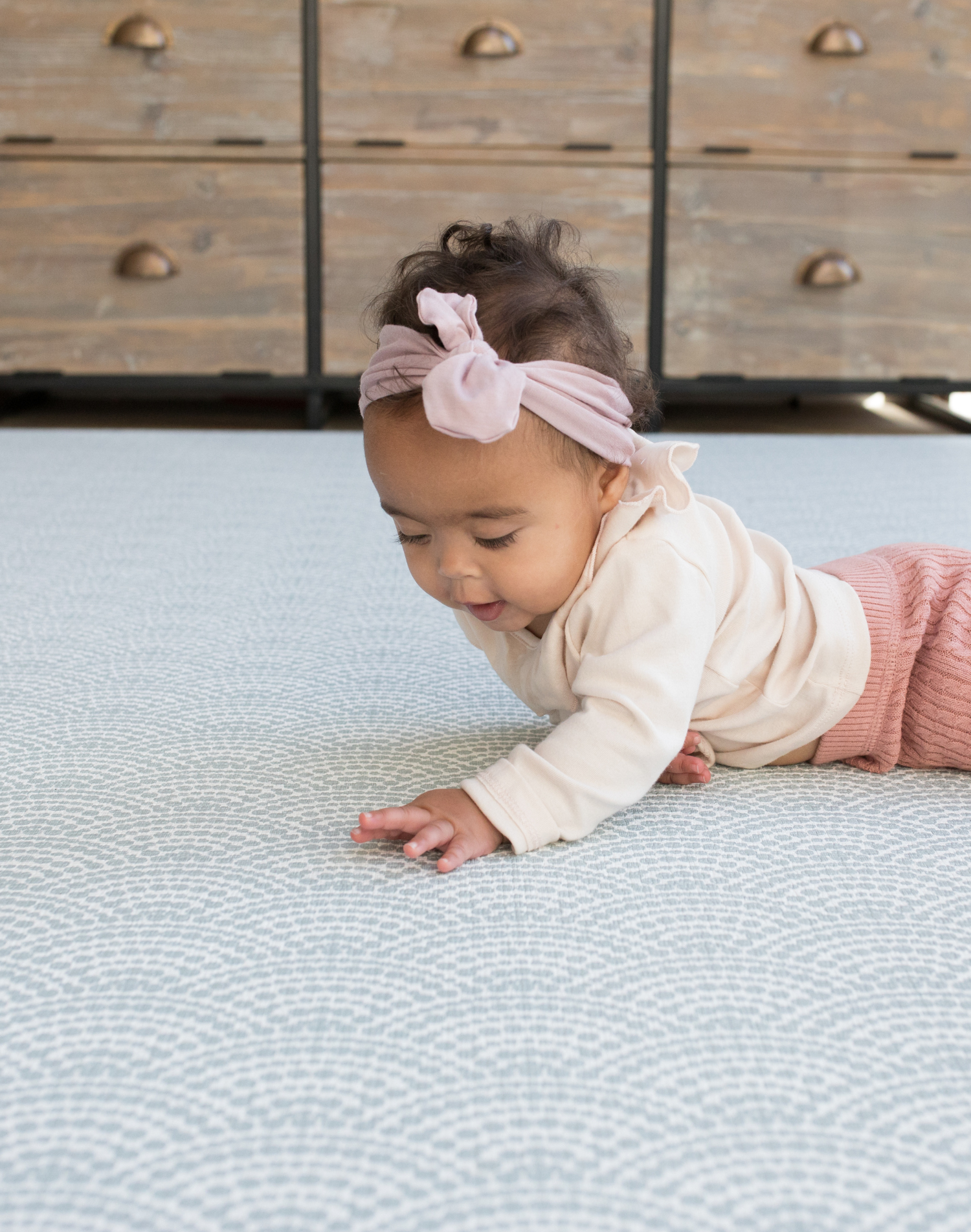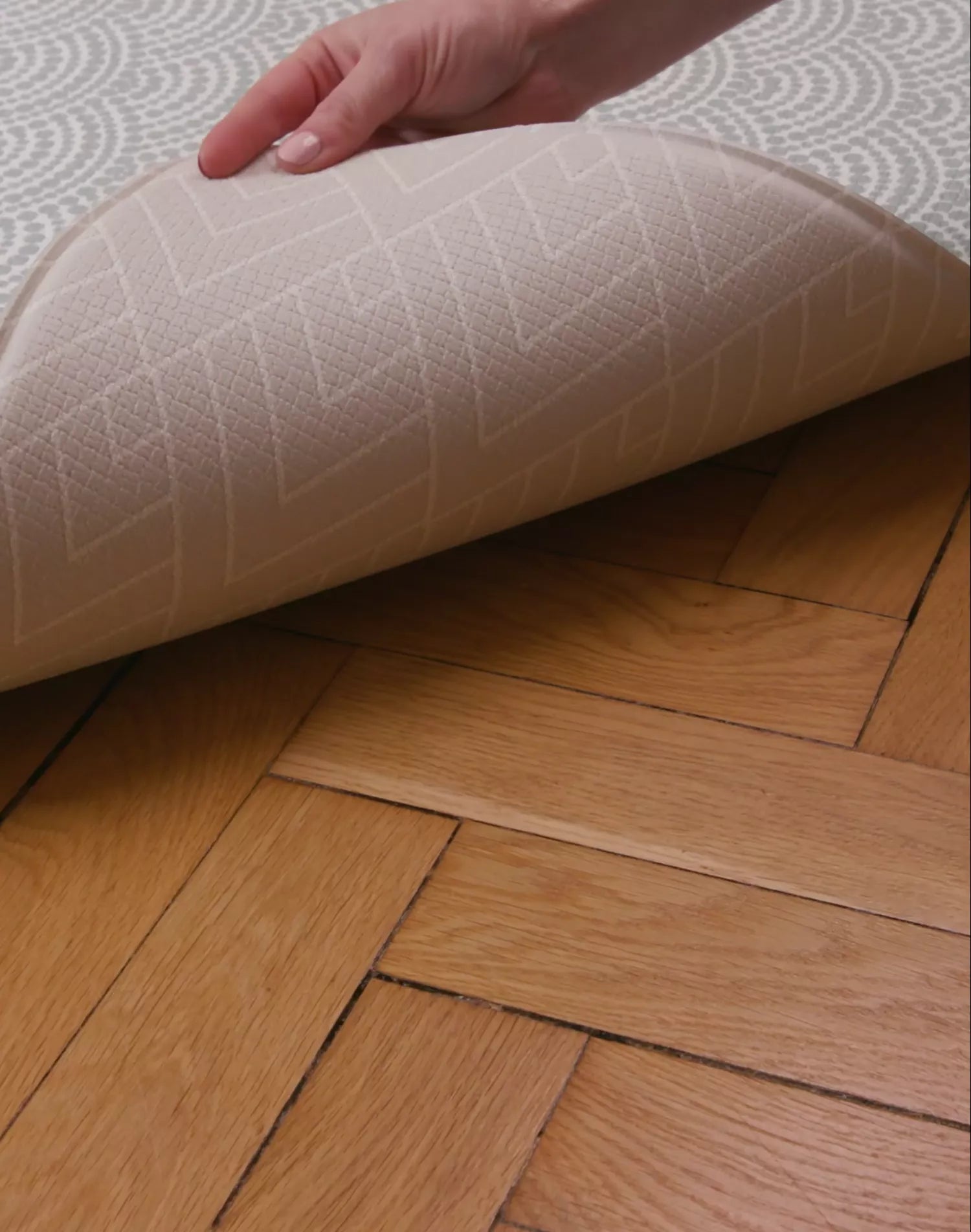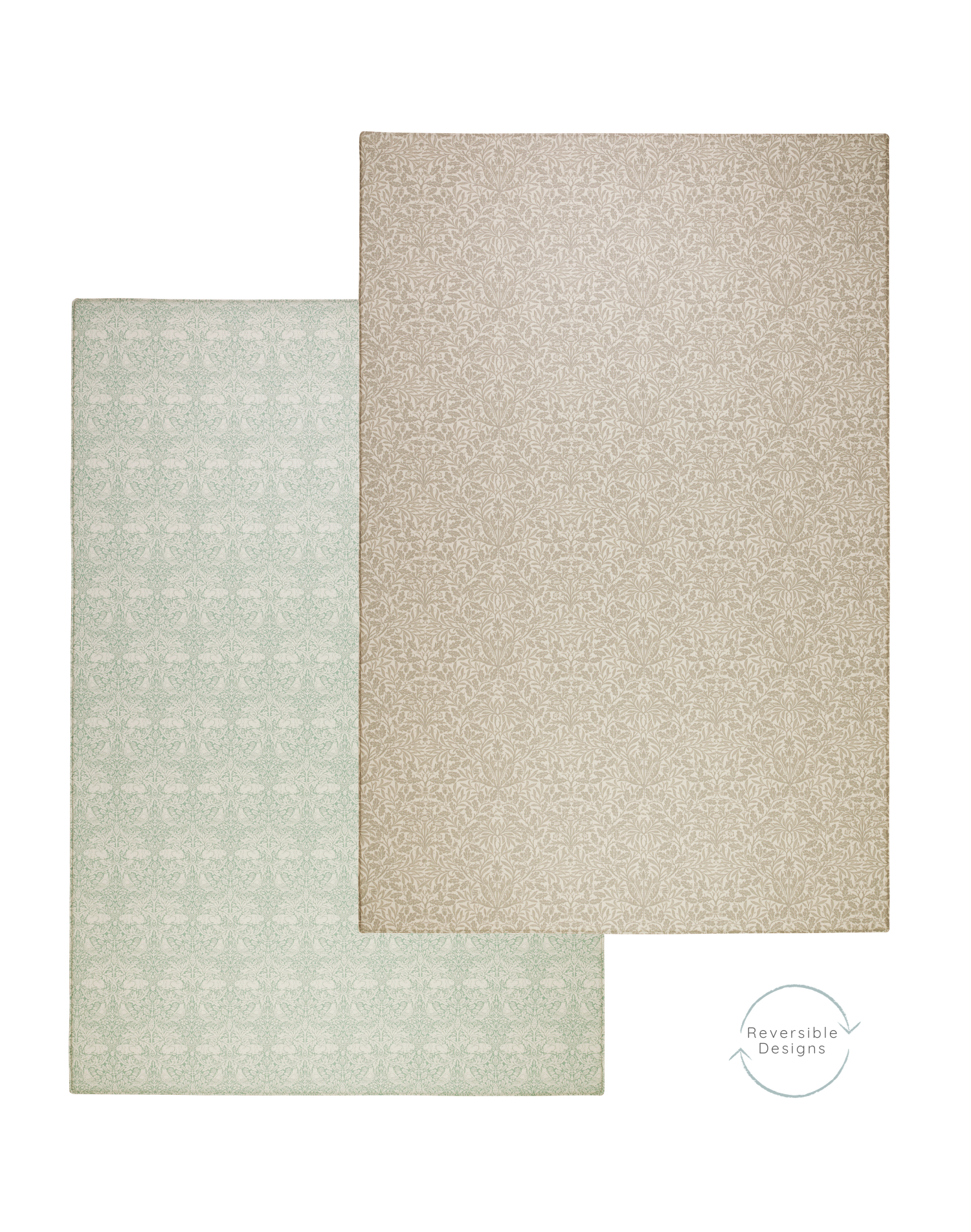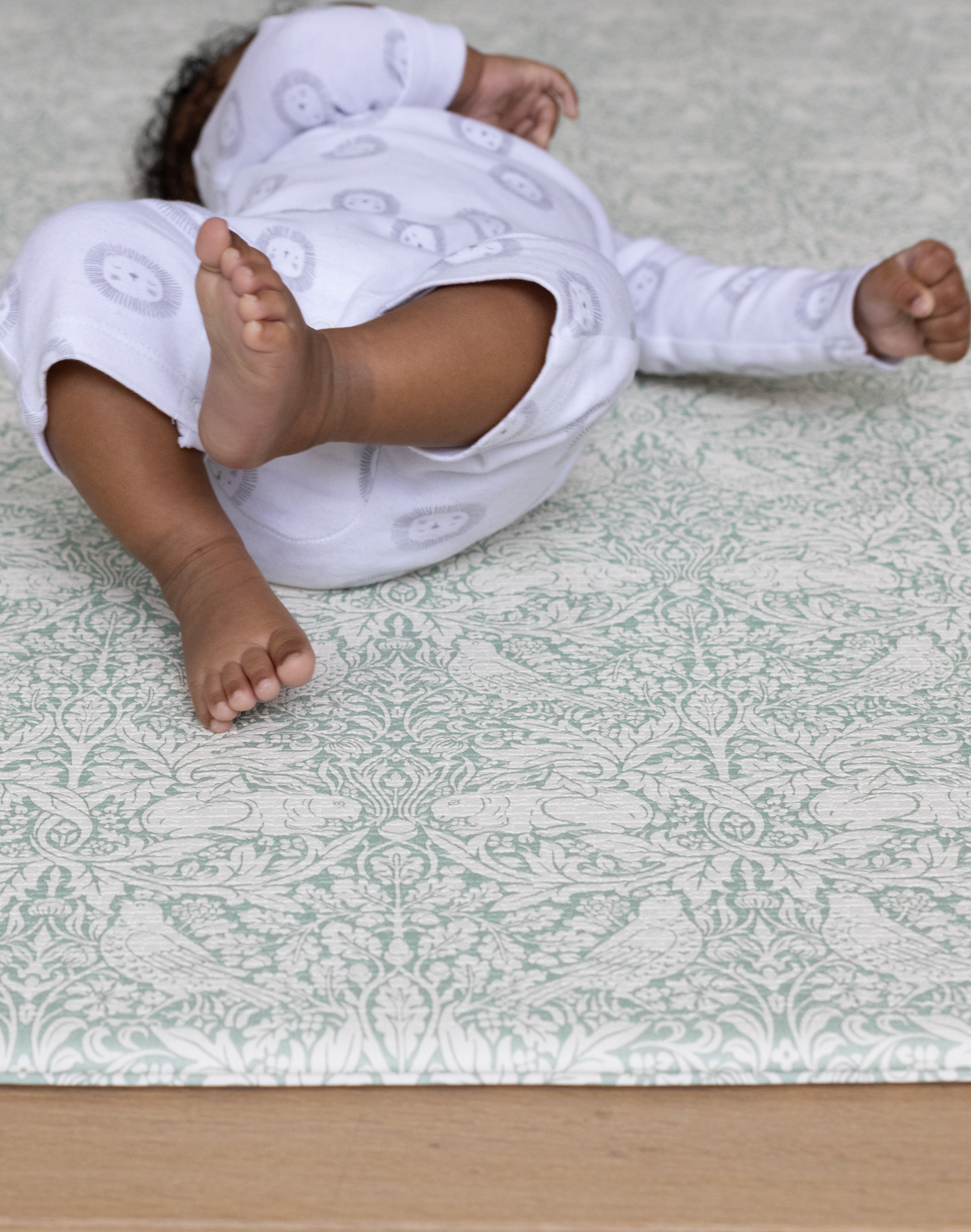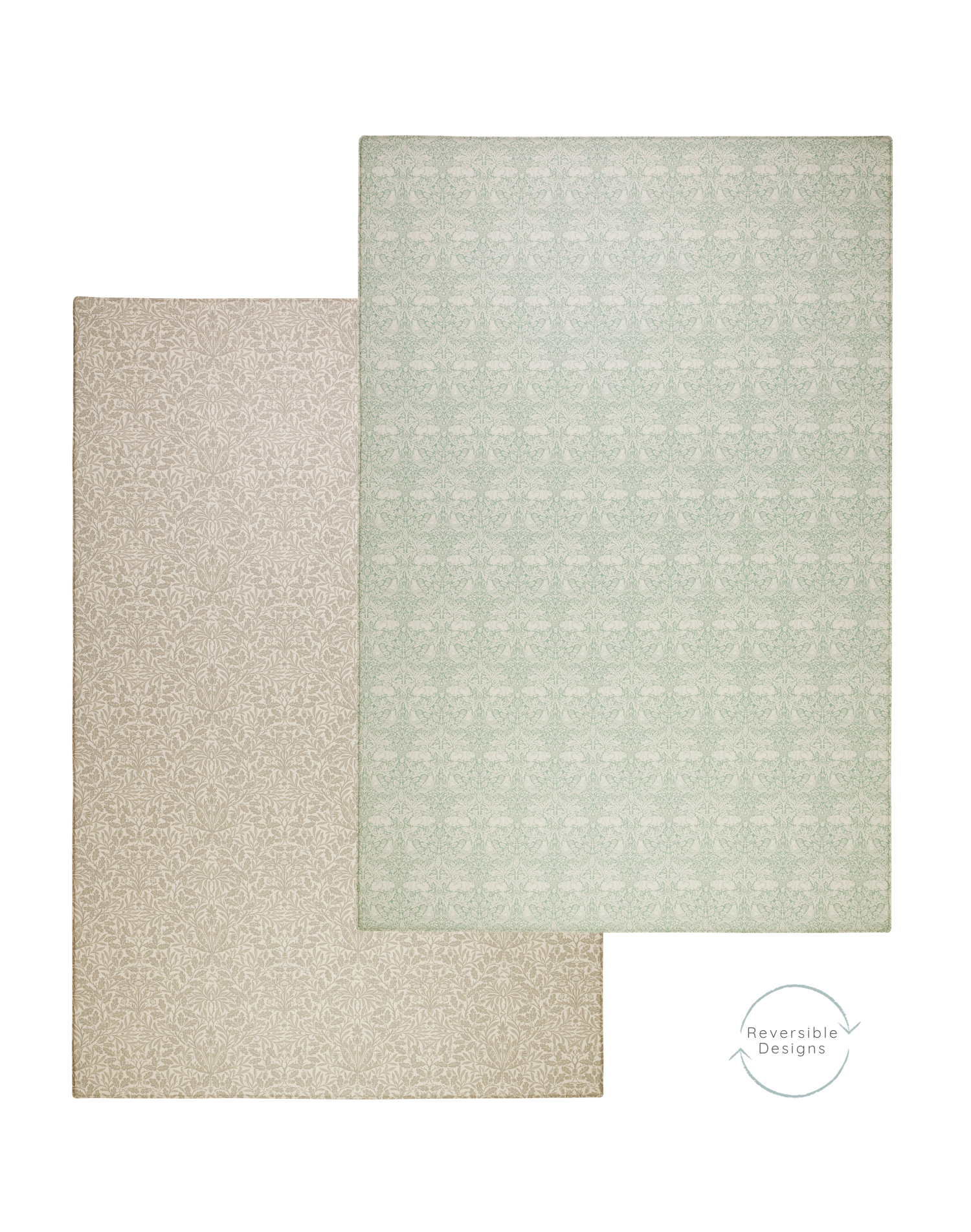When a lot of us parents think about our little ones learning to read, known as phonics, we tend to think of sitting at a desk or table with a bunch of paper or even a wipe down phonics workbook. And whilst this has a good place in their learning, we also know that isn’t very fun, that sitting still may be a challenge, and it require our little ones to have pencil grip and control when they most likely do not. As a primary teacher and having two little ones myself, I know they concentrate more and learn more effectively when movement and the senses are included, whatever their age. Here I have included some ideas for phonics and spelling activities away from the desk and that all your children can play together.
So here is the latest Family Play blog post, with ideas to engage all ages of children in letters to expanding vocabularies, together. As discussed in a previous blog post on why Totter + Tumble playmats are so much more than a stylish and functional playmat, but are also inspired by Montessori learning concepts.
Splat
It is time to get moving! This activity combines physical movement, the fun or a game and the recall of phonics. Lay out on the playmat a selection of what you want to practice. You can either put out for the oldest child, or mix them up. For example, words (pictures can work nicely too) from the weekly spelling, prefixs and suffixes, real words and made up words, and always a few sight words in for practice. For younger children in may just be letter sounds. Having multiple colours can help include pre-phonic learners too. The aim of the game is for the children to associate sound with the written form (maybe a letter sound, part or full word) by running to it and shouting splat as they touch it, before running back to the start and getting a new word.
Play Doh
It may seem obvious - it is a go to for small hands to gain strength, and for the sensory experience and memory locking of forming letter shapes. However, most people assume that by the time a child has started holding a pencil and mark making that the work on fine and gross motor hand skills are over - this is often wrong. In my experience teaching Key Stage Two, the majority of pupils who have joined my classes have had the wrong pencil grip, poor pencil control and disjointed fluency - playing with play dough helps! For older children, it will be about forming smaller details on models, or creating an entire word from one rolled out piece of play dough. The expectations are on a sliding scale, with the youngest really just making basic imprints. And the best news - playing with Play Doh on Totter + Tumble playmats is no problem - just bunch it all back together at the end of the playtime. Simple care, no fuss.
Get Messier

Just like the play dough, Totter + Tumble playmats are ideal for messy play. Using sand, jelly, paints, whipped cream. Whatever level of phonics and spelling your children are on, they will always find this a fun and memorable activity. Smoother textures, such as the whipped cream, offer a fluidity much like a fountain pen that can make cursive writing easier.
Phonics Blocks

As described well on Parenting Chaos, lego and duplo bricks are wonderful for use in phonics, spelling and sentence building. From the basics, different shape bricks can be used to mimic the shape outline and block outline words- great for memorising letter and word shapes. Building up from simple words to complex, adding in phrases, clauses and sentence structure- this is an activity for any age and ability.
Snap
A twist on an old classic, this game is great as it cues up visual association with letters and words, and it can be multiplayer. For the youngest children, this may just be about hearing words, seeing simple pictures, playing with the cards. As they get older and more able to play a game, it will be about recognising the pictures and slowly beginning to get the idea of snap. For preschoolers, KS1 and KS2, they can play together using the same cards. The twist comes in the word that is placed on the bottom the picture. For example, there are two pictures of cats, the preschooler has the word cat and the older child may have feline or Persian etc. The children can then still play together, but are challenged appropriately by the variation in vocabulary used.
You may already have snap or memory cards, but if not then there are a variety of websites that offer printable ones, including this one that also lets you have themes: http://www.dltk-cards.com/memory/memory2.asp
Phonics Fishing

You may have seen the basic fishing game designed for little ones to improve their eye to hand coordination, that comes with a set of wooden fish and two rods with a magnet on the end. Now you can easily make the rods, or scout out your local charity shop as they always seem to be there. For your younger at, the objective will remain as motor skills, but for your older children, it’s really easy to up the fish, to phonics fish, with a card and paper clip. Stick to initial sounds for preschoolers, and move on to CVC (e.g c-a-t) for EYFS stage and nonsense words to challenge Key Stage One children. For Key Stage two, mixing in spelling words, with synonyms and wrong spelt versions allows your child to bring together all their phonetic skills.
For more ideas head to the following:
